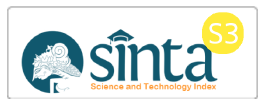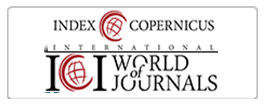Unraveling The Future: Examining How Financial Performance and Company Value Shape The Destiny of Tech Giants
DOI:
https://doi.org/10.22219/jaa.v7i2.31196Keywords:
EBITDA, Financial Distress, Firm Value, ROAAbstract
Purpose: This study aims to examine the effect of which variables (financial performance and firm value) are better in explaining bankruptcy prediction in technology sector companies.
Methodology/approach: This research is an exploratory study using a population of companies in the technology sector listed on the Indonesia Stock Exchange. Samples were taken in the 2018-2022 period using purposive sampling techniques. The analysis technique used regression analysis with IBM SPSS 24 software.
Findings: While firm value may not always predict a tech company's fate, financial performance stands as a critical indicator of potential bankruptcy. This study underscores the importance of prioritizing sound financial health over valuation when assessing risks in the tech sector.
Practical and Theoretical contribution/Originality: This finding confirms that the information generated by the stock market is not immediately responded to by investors. This indicates that the stock market in Indonesia is still classified as semi-efficient.
Research Limitation: The number of company samples is still limited. This happens because many companies do not have complete data. There are technology companies that have not been listed on the IDX for 5 years so they cannot be used in testing.
Downloads
References
Agarwal, V., & Taffler, R. (2008). Comparing the performance of market-based and accounting-based bankruptcy prediction models. Journal of Banking & Finance, 32(8), 1541–1551. https://doi.org/10.1016/j.jbankfin.2007.07.014
Alipour, M., & Pejman, Mohammad E. (2015). The impact of performance measures, leverage and efficiency on market value added: Evidence from Iran. Global Economics and Management Review Volume 20, Issue 1, Pages 6-14. https://doi.org/10.1016/j.gemrev.2015.04.001
Brigham, Eugene F. Dan J.F. Houston. 2010. Dasar - dasar Manajemen Keuangan. Edisi 11. Jakarta: Salemba Empat.
Bui, T. N., Nguyen, X. H., & Pham, K. T. 2023. The Effect of Capital Structure on Firm Value: A Study of Companies Listed on the Vietnamese Stock Market. International Journal of Financial Studies 11, no. 3: 100. https://doi.org/10.3390/ijfs11030100
Dewi, I. R. (2022, December 30). Daftar Startup yang PHK, Bangkrut, dan Tutup Layanan 2022. CNBC Indonesia.
Dewi, M., Foanto, Gabriella N., dan Christiawan, Yulius G. 2021. Profitability, Liquidity, and Firm Value: Does Financial Distress Have a Mediating Effect? (Study of Manufacturing Companies in Indonesia). Advances in Economics, Business and Management Research, volume 197, 437-445.
Egbunike, C. F. & Okerekeoti, C. U. 2018. Macroeconomic Factors, Firm Characteristics and Financial Performance. A Study of Selected Quoted Manufacturing Firms in Nigeria. Asian Journal of Accounting Research Vol 3, No 2. https://doi.org/10.1108/AJAR-09-2018-0029.
Elviana, & Ali, H. (2021). Determination of Financial Distress and Stock Prices: The Effect of Financial Performance and Sales Growth. Dinasti International Journal of Economics, Finance & Accounting, 3(3).
Farras, Bernhart. (2018). Investor Kakap Senang Investasi di Perusahaan Rugi, Kenapa? CNBC Indonesia. https://www.cnbcindonesia.com/market/20180829195931-17-30884/investor-kakap-senang-investasi-di-perusahaan-rugi-kenapa diakses pada 5 Januari 2024.
Gabriellita, & Simbolon, R. F. (2021). Pengaruh Kinerja Keuangan Terhadap Potensi Kebangkrutan Pada Perusahaan LQ 45. Jurnal Ekonomis, 14(2c), 21–37.
Habib, A. M., & Kayani, U. N. (2022). Does the efficiency of working capital management affect a firm’s financial distress? Evidence from UAE. Corporate Governance: The International Journal of Business in Society, 22(7), 1567–1586. https://doi.org/10.1108/CG-12-2021-0440
Hadiputra, A. (2022, March 25). With countries opening up, tech companies will be more attractive to investors this article was published in thejakartapost.com with the title "With countries opening up, tech companies will be more attractive to investors. The Jakarta Post.
Hermuningsih, S. (2014). Pengaruh Profitabilitas, Size Terhadap Nilai Perusahaan Dengan Sruktur Modal Sebagai Variabel Intervening. Jurnal Siasat Bisnis, 16(2). Retrieved from https://journal.uii.ac.id/JSB/article/view/3304
Humaira, J., Barnas, B., & Kristianingsih, K. (2021). Pengaruh Kinerja Keuangan dan Penerapan GCG terhadap Potensi Kebangkrutan pada PT Bank Muamalat Indonesia Tbk. Journal of Applied Islamic Economics and Finance, 1(2), 373–383. https://doi.org/10.35313/jaief.v1i2.2471
Ikhsan, M., Jumono, S., Munandar, A., & Abdurrahman, A. (2022). The Effect of Non-Performing Loan (NPL), Independent Commissioner (KMI), and Capital Adequacy Ratio (CAR) on Firm Value (PBV) Mediated by Return on Asset (ROA). Quantitative Economics and Management Studies, 3(5), 810–824. https://doi.org/10.35877/454RI.qems1063
Inekwe, J. N., Jin, Y., & Valenzuela, Ma. R. (2018). The effects of financial distress: Evidence from US GDP growth. Economic Modelling, 72, 8–21. https://doi.org/10.1016/j.econmod.2018.01.001
Isayas, Y. N. (2021). Financial distress and its determinants: Evidence from insurance companies in Ethiopia. Cogent Business & Management, 8(1). https://doi.org/10.1080/23311975.2021.1951110
Jensen, M.C., & Meckling, W.H. (1976). Theory of the firm: Managerial behaviour, agency costs and ownership structure. Journal of Financial Economics, 3(4), 305–360. https://doi.org/10.1016/0304-405X(76)90026-X
Laksmiwati, M., Mappadang, A., Indrabudiman, A., & Riza, V. G. (2021). Determination of Financial Performance on Prediction Financial Distress. Asian Journal of Economics, Business and Accounting, 46–57. https://doi.org/10.9734/ajeba/2021/v21i2230523
Maryoto, A. (2023, January 26). Perusahaan Teknologi, Antara Hidup dan Mati. Kompas.
Natalia, G. D., & Sulistyowati, E. (2022). Pengaruh Kinerja Keuangan Terhadap Potensi Kebangkrutan Masa Pandemi Covid-19 (Pada Perusahaan Manufaktur yang Terdaftar di BEI). Jurnal Ilmu Dan Riset Akuntansi, 11(2), 1–21.
Platt, H. D., & Platt, M. B. (2002). Predicting corporate financial distress: Reflections on choice-based sample bias. Journal of Economics and Finance, 26(2), 184–199. https://doi.org/10.1007/bf02755985
Pramudita, A., & Gantino, R. (2023). The Influence of Profitability Ratio, Liquidity Ratio, Firm Size And Inventory Turnover On Firm Value (Pbv) (Study On Food And Beverage And Cosmetics And Household Sub-Sector Manufacturing Companies Listed On The Indonesia Stock Exchange 2016-2021 Period). Journal Of Economics, Finance and Management Studies, 06(01). https://doi.org/10.47191/jefms/v6-i1-04
Puspitaningtyas, Z. (2019). Empirical evidence of market reactions based on signaling theory in Indonesia stock exchange. Investment Management and Financial Innovations, 16(2), 66–77. https://doi.org/10.21511/imfi.16(2).2019.06
Restianti, T., & Agustina, L. (2018). The Effect of Financial Ratios on Financial Distress Conditions in Sub Industrial Sector Company. Accounting Analysis Journal, 7(1), 25-33. https://doi.org/10.15294/aaj.v7i1.18996
Sampurna, D. S. & Romawati, E. 2019. Determinants of Firm Value: Evidence in Indonesia Stock Exchange. Advances in Economics, Business and Management Research, volume 132.
Shahwan, T. M. (2015). The effects of corporate governance on financial performance and financial distress: evidence from Egypt. Corporate Governance, 15(5), 641–662. https://doi.org/10.1108/CG-11-2014-0140
Sriram, M. (2023, February). Indian edtech sector still attractive for investors, GSV Ventures says. Reuters.
Suseno, Mohamad A. 2020. Financial Performance, Macroeconomic Factors and Company Characteristics in Consumer Goods Company in Indonesia. International Journal of Economics, Business and Accounting Research Vol. 4, No. 3.
Verriest, A., Bouwens, J., & de Kok, T. (2018). The Prevalence and Validity of EBITDA as a Performance Measure. SSRN Electronic Journal. https://doi.org/10.2139/ssrn.3171131
Wanti, F. H., & Sari, H. M. K. (2022). Analysis of the Effect of Liquidity, Profitability and Debt Policy on Firm Value with Dividend Policy as Moderating Variable. Indonesian Journal of Law and Economics Review, 16. https://doi.org/10.21070/ijler.v16i0.792
Yemima, A., & Jogi, Y. (2020). Pengaruh Firm Value Terhadap Financial Distress. Business Accounting Review, 1–13.
Younas, N., UdDin, S., Awan, T., & Khan, M. Y. (2021). Corporate governance and financial distress: Asian emerging market perspective. Corporate Governance: The International Journal of Business in Society, 21(4), 702–715. https://doi.org/10.1108/CG-04-2020-0119
Downloads
Published
Issue
Section
License
Copyright (c) 2024 Noval Adib, Rizky Aditya Nugraha, Intan Lifinda Ayuning Putri

This work is licensed under a Creative Commons Attribution-NonCommercial-ShareAlike 4.0 International License.
Jurnal Akademi Akuntansi is licensed under a Creative Commons Attribution-NonCommercial-ShareAlike 4.0 International License.
Authors who publish with this journal agree to the following terms:
- Authors retain copyright and grant the journal right of first publication with the work simultaneously licensed under a Creative Commons Attribution-NonCommercial-ShareAlike 4.0 International License that allows others to share the work with an acknowledgment of the work's authorship and initial publication in this journal.
- Authors are able to enter into separate, additional contractual arrangements for the non-exclusive distribution of the journal's published version of the work (e.g., post it to an institutional repository or publish it in a book), with an acknowledgment of its initial publication in this journal.
- Authors are permitted and encouraged to post their work online (e.g., in institutional repositories or on their website) prior to and during the submission process, as it can lead to productive exchanges, as well as earlier and greater citation of published work (See The Effect of Open Access).
Jurnal Akademi Akuntansi dilisensikan di bawah lisensi Creative Commons Attribution-NonCommercial-ShareAlike 4.0 International.
Penulis yang menerbitkan artikel di jurnal ini menyetujui ketentuan berikut:
- Penulis mempertahankan hak cipta dan memberikan hak jurnal atas publikasi pertama dengan karya yang secara serentak dilisensikan di bawah Lisensi Pengaitan Creative Commons yang memungkinkan orang lain untuk berbagi karya dengan pengakuan atas karya penulis dan publikasi awal dalam jurnal ini.
- Penulis dapat masuk ke dalam pengaturan kontrak tambahan yang terpisah untuk distribusi non-eksklusif versi karya jurnal yang diterbitkan (misalnya, mempostingnya ke repositori institusional atau mempublikasikannya dalam sebuah buku), dengan pengakuan publikasi awalnya di jurnal ini.
- Penulis diizinkan dan didorong untuk memposting pekerjaan mereka secara online (misalnya, di repositori institusional atau di situs web mereka) sebelum dan selama proses pengajuan, karena dapat mengarah pada pertukaran produktif, serta kutipan pekerjaan sebelumnya dan yang lebih besar (Lihat Pengaruh Akses Terbuka).























